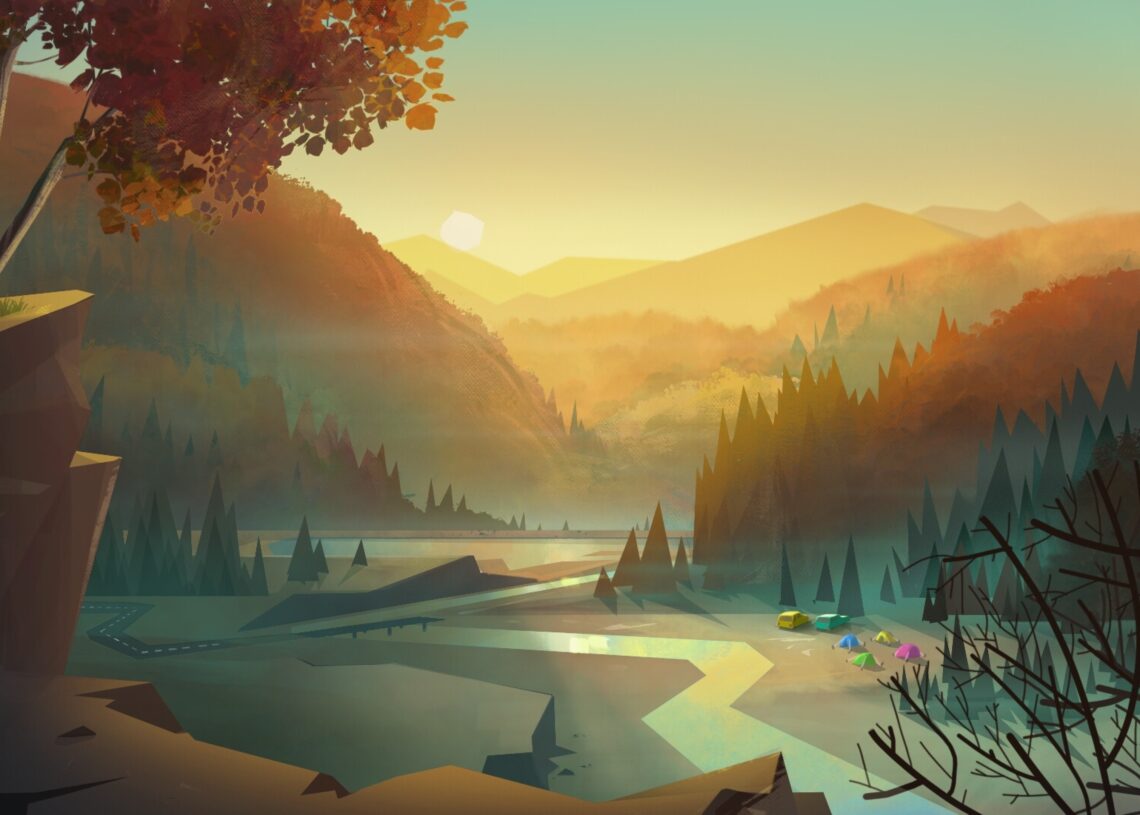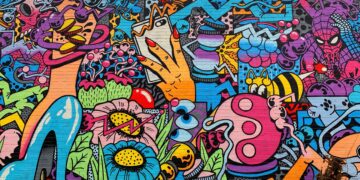The Digital Art Market: Growth and Transformation
The digital art market is experiencing substantial growth as creative vision converges with technological innovation. Fueled by innovative applications and rising engagement from artists and audiences, forecasts point towards continued expansion. This convergence is transforming the creation, distribution, and experience of art. Generative art, powered by AI advancements, is a frontrunner in this space, highlighting AI’s transformative potential in creative endeavors and signaling a shift towards algorithmically driven artistic expression.
Brands are increasingly using digital art to craft immersive experiences. Augmented and virtual reality installations, combined with interactive storytelling, offer new avenues for audience engagement and marketing effectiveness, redefining the boundaries of art and interaction. Blockchain technology is revolutionizing artist compensation through smart contracts, ensuring transparent royalties on resales—a significant improvement over traditional models. This shift empowers artists with greater control over their earnings and fosters a more equitable marketplace.
However, the digital art world faces legal challenges, particularly concerning copyright for AI-generated works. The ambiguity surrounding ownership presents ongoing challenges for artists and platforms. Addressing these legal complexities is crucial for fostering a sustainable digital art ecosystem.
| Year | Digital Art Market Size (USD Billion) | CAGR (%) | Fastest Growing Segment | Fastest Segment CAGR (%) |
|---|---|---|---|---|
| 2024 | 4.97 | — | Generative Art | 16.56 |
| 2025 | 5.80 | 15.28 | Generative Art | 16.56 |
Data Source: Mordor Intelligence “Digital Art Market Size, Growth, Share, Trends & Forecast Report” July 11, 2025
The data underscores the rapid growth of the digital art market, particularly in generative art, signaling a significant shift in the art world driven by technological advancements.
Immersive Art: AR and VR Reshaping Artistic Experiences
Augmented reality (AR) and virtual reality (VR) are revolutionizing digital art by transforming how art is created, experienced, and shared. These technologies offer immersive and interactive possibilities that extend beyond traditional mediums.
AR and VR are pushing the boundaries of art by creating immersive experiences. Artists are no longer confined to static canvases or screens; they can now construct entire worlds for viewers to explore. This shift allows for greater engagement and a deeper connection between the art and the audience, making art more accessible and interactive.
The adoption of AR and VR technologies is rapidly increasing, especially among younger generations. By early 2025, VR had reached approximately 77 million users in the U.S., with particularly high engagement among Gen Z and Millennials. AR’s reach is even broader, with nearly 60% of the U.S. population using it frequently. This widespread adoption is transforming how people interact with digital art.
AR and VR tools are democratizing artistic expression by making it easier for anyone to create and share their art. These technologies offer new avenues for artists to experiment and innovate, fostering a more inclusive and diverse art landscape. As AR and VR become more accessible, expect even greater creativity and innovation in the digital art world.
One of the most exciting aspects of AR and VR is their ability to blur the lines between the physical and digital worlds. Artists are using these technologies to create experiences that seamlessly blend virtual elements with our everyday surroundings. This fusion of art and reality opens up endless possibilities for creative expression and audience engagement.
Motion Graphics and Animation: Expanding Creative Horizons
Innovations in motion graphics and animation are pushing creative boundaries, offering exciting new possibilities for artists and storytellers. Virtual reality (VR) and augmented reality (AR) are changing how animated content is experienced, allowing for immersive storytelling across various sectors, including entertainment, advertising, education, and even healthcare. This shift expands creative possibilities beyond traditional static images.
Technological advancements, such as AI-powered tools and real-time rendering engines, are transforming workflows in the animation industry. These innovations are streamlining production cycles and enabling artists to experiment with new visual effects techniques more efficiently than ever before.
The demand for high-quality animated content is surging, particularly in marketing communications. As animation becomes more integral to digital narratives, the U.S. animation sector employs around 220,000 people. The marketing animation video market size reached $271.1 million. The increasing demand for animation has also positively impacted wages, with skilled animators seeing their median annual income rise, reflecting the growing value and importance of their expertise in the digital landscape. As of recent data, the median annual income for animators nears $100k.
| Category | Value | Year | Geographic Focus |
|---|---|---|---|
| U.S. Animation Sector Employment | 220,000 people | 2024 | United States |
| Median Wage (Animators/SFX Artists) | $99,800/year | 2024 | United States |
| U.S. Marketing Animation Video Market Size | $271.1 million | 2024 | United States |
Data Source: Coolest Gadgets《Animation Industry Statistics and Facts (2025)》and Market.us《Marketing Animation Video Production Market》 May 2024 (wage, employment), February 2025 (market size)
The data emphasizes the growth and importance of the animation industry in the U.S., driven by increasing demand and technological advancements.
Interactive Media: Engaging Audiences in New Ways
Interactive media is transforming how people experience digital art by blending technology and creativity to offer immersive and personalized experiences. Social platforms are reshaping how individuals connect with creative content, with a significant portion of the population actively engaging on social media, especially younger demographics. This widespread adoption fuels interactive media adventures, where art and tech merge, offering real-time collaboration and personalized stories.
Graphic Design and Illustration: Emerging Trends
Staying ahead in graphic design and illustration requires a keen understanding of emerging trends and how they resonate with audiences. Three-dimensional illustrations are gaining traction, offering a visually dynamic and attention-grabbing aesthetic. The use of bold colors, shapes, and volume creates a futuristic look, ideal for branding, web design, and digital products seeking a modern edge. This approach allows for innovative visual storytelling and a heightened sense of engagement.
Surrealism continues to captivate, lending a dreamlike and imaginative quality to designs. Its ability to add creativity and style makes it a popular choice for software, mobile apps, and creative advertising. The trend provides a unique way to distinguish brands and products in competitive markets through unexpected and thought-provoking visuals.
Printmaking is experiencing a resurgence, bringing warmth and authenticity to the digital realm. This retro-inspired style, often merged with other techniques, creates visually appealing collages and bridges the gap between traditional and digital art. Its appeal lies in its ability to evoke nostalgia while maintaining a contemporary feel.
Q&A
Question 1: How are augmented reality (AR) and virtual reality (VR) technologies impacting the creation and experience of digital art?
Answer: AR and VR are creating immersive art experiences, allowing artists to build entire worlds for viewers to explore and fostering deeper audience engagement. These technologies are also democratizing artistic expression by making it easier for anyone to create and share their art, blurring the lines between the physical and digital worlds. The text cites significant adoption rates for both technologies in the US, particularly among younger generations.
Question 2: What are the major challenges facing the digital art industry, and how are some of these being addressed?
Answer: A significant challenge is copyright for AI-generated works, due to ambiguity surrounding ownership. However, blockchain technology is being used to revolutionize artist compensation through smart contracts, ensuring transparent royalties on resales and offering greater control over earnings. This addresses the issue of fair compensation for artists in a rapidly changing marketplace.
Question 3: What is the projected growth of the digital art market, and which segment is experiencing the fastest growth?
Answer: The provided data projects significant growth in the digital art market, reaching $4.97 billion in 2024 and $5.80 billion in 2025, with a Compound Annual Growth Rate (CAGR) of 15.28%. The fastest-growing segment is generative art, boasting a CAGR of 16.56%. This indicates a strong market trend towards AI-driven artistic expression.
Question 4: How is the animation industry benefiting from technological advancements, and what is the current state of employment and wages in this sector?
Answer: Advancements such as AI-powered tools and real-time rendering engines are streamlining animation workflows and enabling artists to experiment with new visual effects. The demand for high-quality animated content is surging, particularly in marketing, leading to approximately 220,000 jobs in the U.S. animation sector in 2024, with a median annual wage for animators and special effects artists nearing $100,000.







